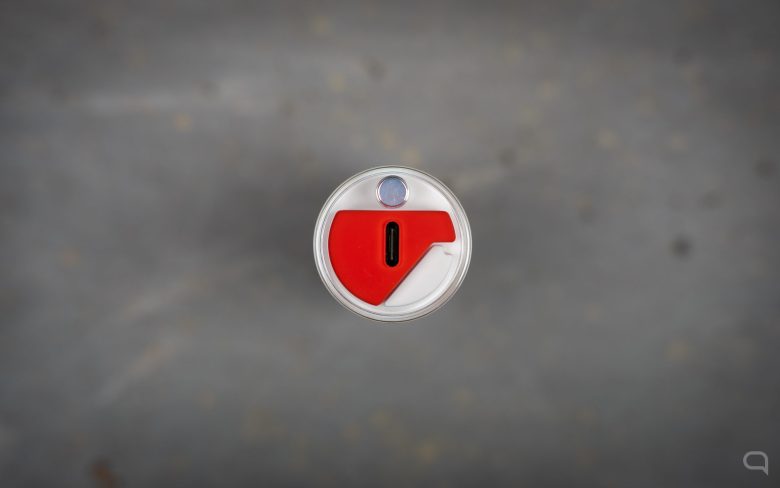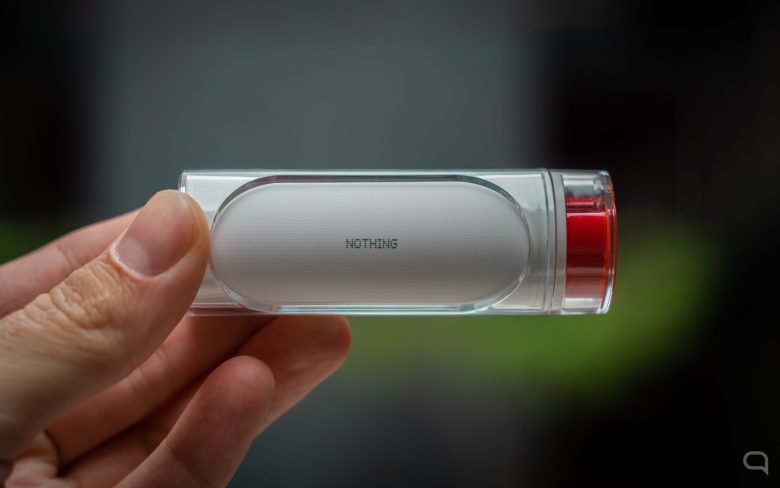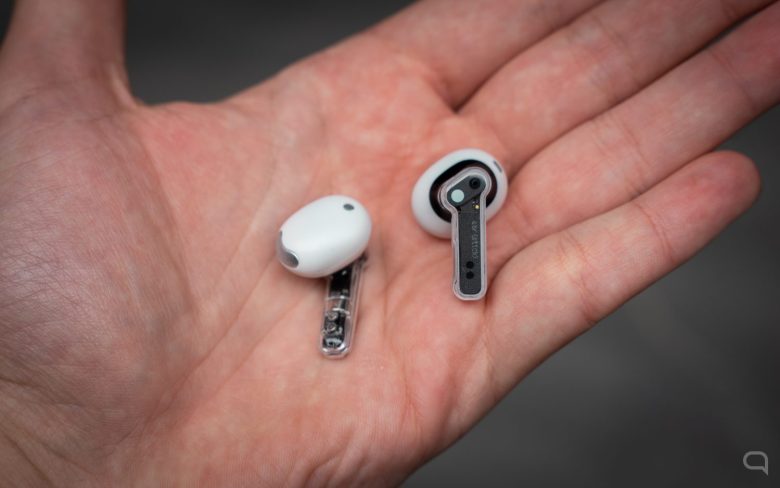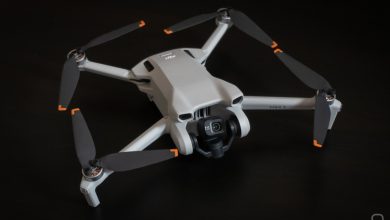Nothing Ear (Stick) review: An iconic design that has the competition at home
A peculiar design and a good user experience. But, is that enough for these Nothing Ear (1) to be the most recommended headphones in their segment, even above the Nothing Ear (1)?

 Nothing landed about 18 months ago with headphones, the Ear (1), which were quite a declaration of intent: striking aesthetics, an honest product regarding its claims and price, and a communication strategy based on great expectations.
Nothing landed about 18 months ago with headphones, the Ear (1), which were quite a declaration of intent: striking aesthetics, an honest product regarding its claims and price, and a communication strategy based on great expectations.
That same philosophy was reflected months later in the Nothing Phone (1 , which I would include among my favorites of 202. And now, the brand wants to bring that same philosophy to a third product: the Nothing Ear (Stick).
These are button headphones that do not enter the auditory pavilion and focus on design, like the rest of Nothing’s products. They also try to offer a good user experience. These do not replace Nothing Ear (1), which has increased in price in the brand’s official store. The idea, just like Apple does with AirPods, is to offer different options to consumers: an in-ear, with active noise cancellation and a slightly higher price; another with a button, less intrusive in the ears and with a more reasonable price.
And yes, some people do not like in-ear headphones by how they fit with your Ear, by the use they make of them, etc. I would not include myself in that group. Whenever I can, I will choose in-ear headphones with noise cancellation, even more so if it has a transparency or ambient mode that allows me to naturally hear what is happening around me when I need it. As Hannah Montana would say, you get the best of both worlds. But that, I insist, is my personal preference. For tastes, colors. And, as I said, some people prefer less intrusive earbuds with an ear cup. That is the audience that Nothing wants to appeal to with the Ear (Stick).


an iconic design
The design is, without a doubt, one of the differential attributes of the Nothing Ear (Stick). Many elements are familiar with the Nothing Ear (1): transparencies, a “stem” of straight lines… What does change is the part of the earphone that is in contact with the Ear. Logical. The Ear (1) has to adapt to an in-ear design that involves pads, while the Ear (Stick) does not.
Another differential feature of the Nothing Ear (Stick) is the case. Once again, the brand resorts to transparencies to achieve that iconic aesthetic and opt for a different format than usual: a cylinder. This does not bring anything new or better from a functional point of view –it is not worse than the alternatives we are used to–but achieves something important: being recognizable and differentiating itself from what most brands do.
The opening and closing mechanism of the case is quite curious. It is a layer that rotates to match –or not– an opening that allows the headphones to be removed from the inside. And all the details have been taken care of: the rotation is fluid, the magnets make it difficult to rotate when one of the two positions is reached (opening or closing), and the interior has been taken care of – unlike in other products where it is not visible -, etc. Great job in this regard, by Nothing.

How do they behave on a day-to-day basis?
As far as sound is concerned, the Nothing Ear (Stick) offers, in general terms, a pleasant experience with other headphones of the same price. Of course: part of that good experience was experimenting with equalizing the headphones using the Nothing X application –which has a new name–. The default EQ modes aren’t bad per se, but I did get a superior experience after a few minutes of trying different tracks and settings.
About the equalization, a positive thing that is negative at the same time, depending on how you see it: you only have three adjustment selectors (high, medium, and low), unlike other headphones that allow you to modify the behavior with more granularity – like the application Sony Headphones Connect–. It’s easier to use – better for the less knowledgeable – but you’re more limited in modifying the behavior of the headset. In any case, this is a minor detail.
Regarding comfort and zero complaints, this statement shouldn’t come as a surprise considering how well Nothing had been done in this regard with the Ear (1). However, it is always important to clarify that the comfort of headphones is somewhat subjective since each Ear has its particularities.
On the Nothing Ear (Stick), on the other hand, we don’t have active noise cancellation, which makes sense as it’s an open-type headphone rather than an in-ear one. Implementing a system that reduces noise using microphones and algorithms is useless if the auditory pavilion is not minimally sealed.
We have a low latency mode for when we play with headphones on, as well as compatibility with Google’s Fast Pair system – which simplifies the link with Android devices. It works as expected. The gesture control system implemented in the headphones, which can also be customized from the application, also complies with what was promised.
I have had the occasional problem with the automatic pause when removing the headphones from the Ear. On some occasions, the playback had not paused when I removed them from my ears, as with other headphones. If you are listening to music, it is not a drama. But if you are, for example, listening to a podcast, it forces you to have to go back when you resume playback to listen to that fragment.
On the other hand, the Nothing Ear (Stick) battery has never been a problem. The brand promises seven hours of uninterrupted use, and, in general, my experience has been quite close to that. You can also get an additional 22 hours of use, according to the manufacturer—more than enough even for long-distance trips. To recharge them, you also have a universal USB-C port that simplifies the process.
An interesting detail of the Nothing Ear (Stick) is the transparent voice system that reduces external noise. I wouldn’t say it’s miraculous because that’s impossible, but it does help improve call quality. Or the WhatsApp audio, which is more in keeping with the times we live, perhaps. Delivers as promised.

Are Nothing Ear (Stick) worth it?
The Nothing Ear (Stick) has left me with a good aftertaste. Those looking for headphones with a great design, of the open type, with good autonomy and a sound according to their range, will find a solid proposal in this model.
Of course: I feel that the potential market for these Nothing Ear (Stick), except for a notable price drop in the following months, is limited. I explain:
- For similar prices, you have proposals like the LinkBuds S from Sony – with a worse design, but they have noise cancellation and the confidence of an iconic brand in this market like Sony. These are on Amazon for 129 euros when I write these words.
- On the other hand, Nothing Ear (1), despite the brand’s announced price increase, is still being sold in stores like Amazon for less than 100 euros. That is to say: they are cheaper and, in addition, they have active noise cancellation.
The outlook, therefore, is summed up as follows: whoever wants the best headphones within that price range will find the Ear (1) or the LinkBuds S a more complete and even cheaper proposal.
The only gap left for the Ear (Stick), considering its starting price, is that of those who, willing to enter that price range, want some open headphones and value the attractive design they put on the table. A gap that gives me the impression that it is pretty tiny.
The story, yes, could be different in a few months if the price of these headphones begins to fall, as with the Nothing Ear (1). In that case, the potential market could widen depending on how steep the decline is. But, for the moment, the situation is this: a good product surrounded by more striking proposals – even from the same brand.




